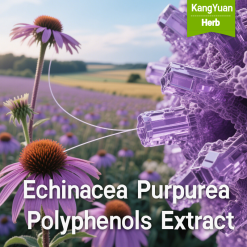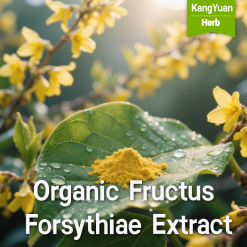
Pharmaceutical Grade Atropa Belladonna Extract from Hangyuan Herb
Hangyuan Herb is a specialized manufacturer of Atropa Belladonna Extract, meticulously standardized for its content of tropane alkaloids, including atropine, hyoscyamine, and scopolamine. Sourced from Atropa belladonna L., commonly known as deadly nightshade, this potent botanical extract is produced under stringent quality controls. Due to its powerful pharmacological activity, our Atropa Belladonna Extract is supplied exclusively to pharmaceutical companies for the formulation of regulated medicinal products and to qualified scientific research institutions.
Sourcing Standardized Tropane Alkaloids for Pharmaceutical Use?
Are you a pharmaceutical manufacturer requiring a reliable, consistent, and high-purity source of Atropa Belladonna extract standardized for its key tropane alkaloids? The critical nature of these compounds demands exceptional quality control, traceability, and adherence to pharmaceutical manufacturing standards. Sourcing botanicals with such potent bioactivity necessitates a supplier with proven expertise and a commitment to safety and regulatory compliance.
Hangyuan Herb provides pharmaceutical-grade Atropa Belladonna Extract, manufactured to meet the exacting requirements of the pharmaceutical industry. We offer a dependable supply of this critical botanical raw material, backed by comprehensive analytical documentation. Keywords: atropine supplier, hyoscyamine source, scopolamine manufacturer, pharmaceutical belladonna extract, tropane alkaloids.
Key Features of Hangyuan Herb Atropa Belladonna Extract
Standardized Tropane Alkaloid Content
Our extract is precisely standardized to defined levels of key tropane alkaloids (e.g., total alkaloids, or specific alkaloids like atropine), ensuring consistent dosage and pharmacological activity for pharmaceutical applications. Keywords: standardized atropine, belladonna alkaloids, consistent potency extract.
Sourced from Atropa Belladonna L.
Authentic botanical sourcing from Atropa belladonna L. ensures the correct phytochemical profile necessary for its established medicinal uses in regulated products. Full traceability is maintained. Keywords: genuine atropa belladonna, deadly nightshade extract, botanical raw material.
Pharmaceutical Quality Manufacturing
Produced under stringent quality management systems (e.g., GMP principles, if applicable), our Atropa Belladonna extract meets high standards for purity, safety, and consistency required by the pharmaceutical industry. Keywords: GMP belladonna extract, pharmaceutical grade botanical, quality controlled alkaloids.
Dedicated to Pharmaceutical & Research Supply
Hangyuan Herb focuses on supplying this potent extract to legitimate pharmaceutical manufacturers and scientific researchers, ensuring responsible handling and application. Keywords: belladonna for pharmaceutical use, research grade tropane alkaloids, API supplier.
Intended Applications & Critical Considerations
Hangyuan Herb Atropa Belladonna Extract is exclusively supplied for:
- Pharmaceutical Manufacturing: As an Active Pharmaceutical Ingredient (API) or key raw material for producing regulated medicines (e.g., antispasmodics, anticholinergics, mydriatics).
✔ - Scientific Research: For pharmacological, toxicological, and phytochemical studies by qualified research institutions.
✔ - Veterinary Pharmaceutical Preparations: Under specific veterinary drug formulation guidelines.
✔ - Analytical Reference Standards: For laboratory quality control and alkaloid analysis.
✔ - NOT FOR DIRECT CONSUMER SALE: This is a potent raw material for professional industrial use only.
✔
NOT FOR UNREGULATED SUPPLEMENTS: Due to toxicity, not suitable for general dietary supplements.
✔
Critical Safety & Regulatory Warning: Atropa Belladonna and its extracts are highly toxic and contain potent tropane alkaloids. This product is intended SOLELY for use by qualified pharmaceutical manufacturers and researchers who are equipped to handle such substances safely and in full compliance with all national and international regulations governing controlled botanical drugs. Extreme caution, expert knowledge, and adherence to safety protocols are mandatory.
Hangyuan Herb: Your E-E-A-T Manufacturer for Potent Botanical APIs
Hangyuan Herb is a specialized and responsible manufacturer of potent botanical extracts, operating with strict adherence to Expertise, Experience, Authoritativeness, and Trustworthiness (E-E-A-T). Our Expertise in phytochemistry and pharmaceutical-grade extraction ensures the quality and standardization of our Atropa Belladonna Extract. With significant Experience in handling potent botanicals, we prioritize safety and compliance. As an Authoritative supplier to the pharmaceutical sector, we provide comprehensive documentation (COA, MSDS) and full traceability. We build Trust by ensuring product integrity, reliable supply, and responsible stewardship of powerful natural compounds.
For pharmaceutical manufacturing and legitimate research requiring standardized Atropa Belladonna Extract, partner with Hangyuan Herb.
Keywords: Hangyuan Herb belladonna, buy atropine raw material, pharmaceutical tropane alkaloids, E-E-A-T API manufacturer, China belladonna supplier.
Product Specifications
| Property | Detail |
|---|---|
| Product Name | Atropa Belladonna Extract (Standardized Tropane Alkaloids) |
| Botanical Source | Atropa belladonna L. (Leaf and/or Root – specify part used) |
| Key Active Compounds | Tropane Alkaloids (e.g., Atropine, Hyoscyamine, Scopolamine) |
| Specification (Alkaloids) | E.g., Total Alkaloids ≥ [Specify %], or Atropine ≥ [Specify %] by HPLC [Specify exact standardization and method] |
| CAS Numbers (Examples) | Atropine: 51-55-8; Hyoscyamine: 101-31-5; Scopolamine: 51-34-3 |
| Appearance | Brown to Dark Brown Powder or Extract Paste [Adjust based on form] |
| Grade | Pharmaceutical Grade / API Raw Material [Specify clearly] |
| Certifications | [Specify GMP, DMF availability, ISO, etc. – Crucial for pharma clients] |
A comprehensive Certificate of Analysis (COA), including alkaloid profile by HPLC, and Material Safety Data Sheet (MSDS) are provided. This product is for professional B2B use only. Please contact Hangyuan Herb for inquiries.
faq
Belladonna Extract FAQ
- ⚠
What is Atropa Belladonna Extract Powder?
Atropa Belladonna Extract Powder is a highly concentrated botanical derivative from the Atropa belladonna plant, commonly known as Deadly Nightshade. It is standardized for its content of potent tropane alkaloids, primarily atropine, hyoscyamine, and scopolamine. THIS IS A HIGHLY TOXIC SUBSTANCE.
- ⚠
What are tropane alkaloids (atropine, hyoscyamine, scopolamine)?
Atropine, hyoscyamine, and scopolamine are naturally occurring tropane alkaloids with powerful anticholinergic (muscarinic antagonist) activity. They can significantly affect the nervous system, heart rate, glandular secretions, and smooth muscles. These are potent pharmaceutical compounds.
- ⚠
How is your Atropa Belladonna Extract standardized?
Our Atropa Belladonna Extract is standardized to a specific concentration of total tropane alkaloids, or individual alkaloids like atropine, as determined by High-Performance Liquid Chromatography (HPLC). The exact specification (e.g., 0.5% – 1.5% total alkaloids) is detailed on the Certificate of Analysis (COA). This is a POTENT material.
- ⚠
How are the alkaloid levels verified?
The concentration of specific tropane alkaloids is accurately quantified using validated High-Performance Liquid Chromatography (HPLC) methods. This ensures precise potency for its intended specialized applications. These results are documented on the COA.
- !
What are the CRITICAL SAFETY WARNINGS for Atropa Belladonna Extract?
EXTREME DANGER: Atropa belladonna and its extracts are HIGHLY TOXIC and can be FATAL if ingested, even in small amounts. Symptoms of poisoning include dilated pupils, blurred vision, dry mouth, rapid heartbeat, difficulty breathing, delirium, hallucinations, convulsions, coma, and death. THIS PRODUCT IS ABSOLUTELY NOT FOR HUMAN OR ANIMAL CONSUMPTION, NOT FOR USE IN DIETARY SUPPLEMENTS OR FOODS, AND NOT FOR SELF-MEDICATION. It must be handled ONLY by qualified professionals in controlled laboratory or pharmaceutical manufacturing settings with appropriate safety precautions and expertise in handling potent toxins.
- ⚠
What are the legitimate and highly restricted B2B applications for this extract?
This extract is supplied strictly as a raw material for: 1) Pharmaceutical manufacturing of approved drug products containing precisely dosed belladonna alkaloids (e.g., atropine) under strict regulatory oversight. 2) Scientific research (pharmacological, toxicological studies) by qualified institutions. 3) As an analytical reference material. ANY OTHER USE IS STRONGLY DISCOURAGED AND POTENTIALLY ILLEGAL AND DANGEROUS.
- ⚠
What is the regulatory status of Atropa Belladonna and its alkaloids?
Atropa belladonna and its active alkaloids (atropine, scopolamine, hyoscyamine) are heavily regulated as prescription drugs or controlled substances in most countries due to their toxicity and potent pharmacological effects. Their inclusion in dietary supplements or foods is prohibited in many jurisdictions (e.g., by FDA, EFSA). B2B customers are solely responsible for ensuring full compliance with all local, national, and international laws and regulations governing its purchase, handling, and use.
- ●
What parts of the Atropa belladonna plant are used for extraction?
Typically, the leaves and/or roots of the Atropa belladonna plant are used for extraction, as these parts contain significant concentrations of the target tropane alkaloids.
- ●
Is your extract tested for quality beyond alkaloid content?
Yes, in addition to alkaloid potency (HPLC), each batch is tested for identity, residual solvents (from extraction/purification), and may be screened for heavy metals or microbial limits according to specifications for pharmaceutical raw materials or research chemicals.
- ●
Is the manufacturing process GMP compliant for this type of material?
The extraction and purification of potent alkaloids like those from Atropa belladonna are conducted under stringent quality control systems, adhering to principles aligned with Good Manufacturing Practices (GMP) for active pharmaceutical ingredients (APIs) or high-purity research chemicals.
- ⚠
What are the critical storage and handling requirements?
DANGER – TOXIC. Store Atropa Belladonna Extract in a secure, locked, cool, dry, dark, and well-ventilated area, inaccessible to unauthorized personnel, and away from food, feed, and incompatible substances. Must be handled only by trained personnel using appropriate Personal Protective Equipment (PPE), including gloves, eye protection, and respiratory protection if powder is aerosolized. Refer to the Material Safety Data Sheet (MSDS) for full details.
- ●
What is the appearance and solubility of the extract?
Atropa Belladonna Extract powder is typically brownish. The solubility of the alkaloids depends on their form (free base vs. salt) and the solvent. Atropine, for example, is sparingly soluble in water but more soluble in alcohol and chloroform. Consult the specification sheet and MSDS.
- ⚠
Who are the intended B2B recipients for this highly toxic extract?
This product is sold exclusively to legitimate pharmaceutical manufacturers, licensed research institutions, and chemical supply companies with demonstrable expertise and legal authorization to handle potent, toxic, and regulated botanical derivatives for approved scientific or pharmaceutical manufacturing purposes only.
- ●
What technical documentation is provided?
We provide a Certificate of Analysis (COA) with HPLC data for alkaloid content, a Specification Sheet, and a comprehensive Material Safety Data Sheet (MSDS) detailing critical safety, handling, toxicity, and emergency information. This documentation is essential for safe and compliant handling.
- ⚠
Are samples available for laboratory research?
Samples may be available in very small, controlled quantities ONLY to pre-qualified, legitimate research institutions or licensed pharmaceutical developers, subject to rigorous screening, legal compliance checks, and signed agreements regarding safe handling and intended use. Not for general evaluation.
- ⚠
What is the typical Minimum Order Quantity (MOQ) for Atropa Belladonna Extract?
Due to its extreme toxicity, high potency, and regulated nature, Atropa Belladonna Extract is typically supplied in small, controlled quantities suitable for pharmaceutical research or pilot-scale manufacturing by authorized entities. Large bulk sales are subject to stringent regulatory oversight. Please inquire with detailed credentials and intended use.












